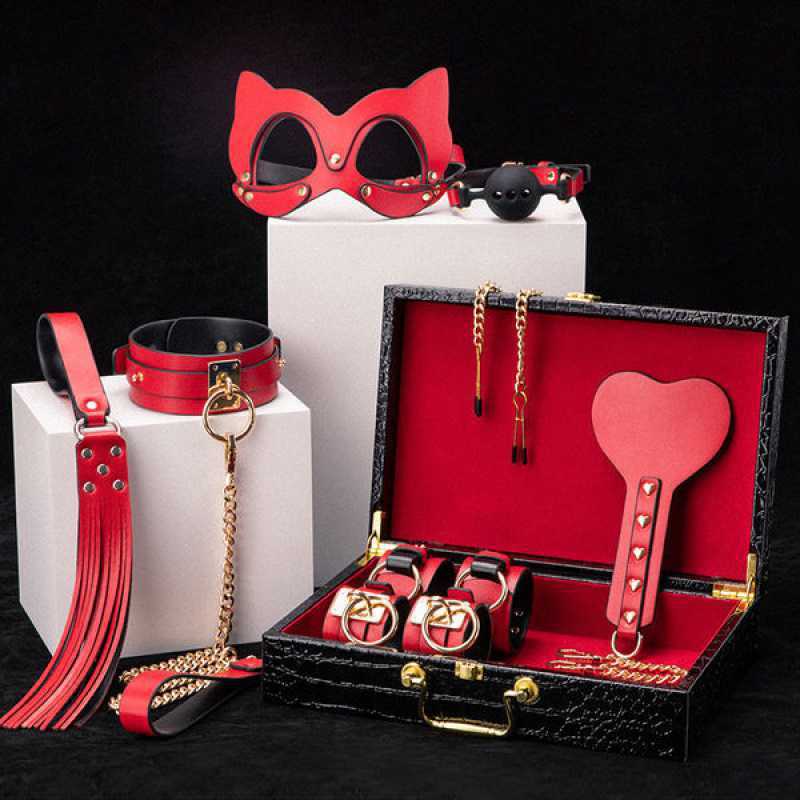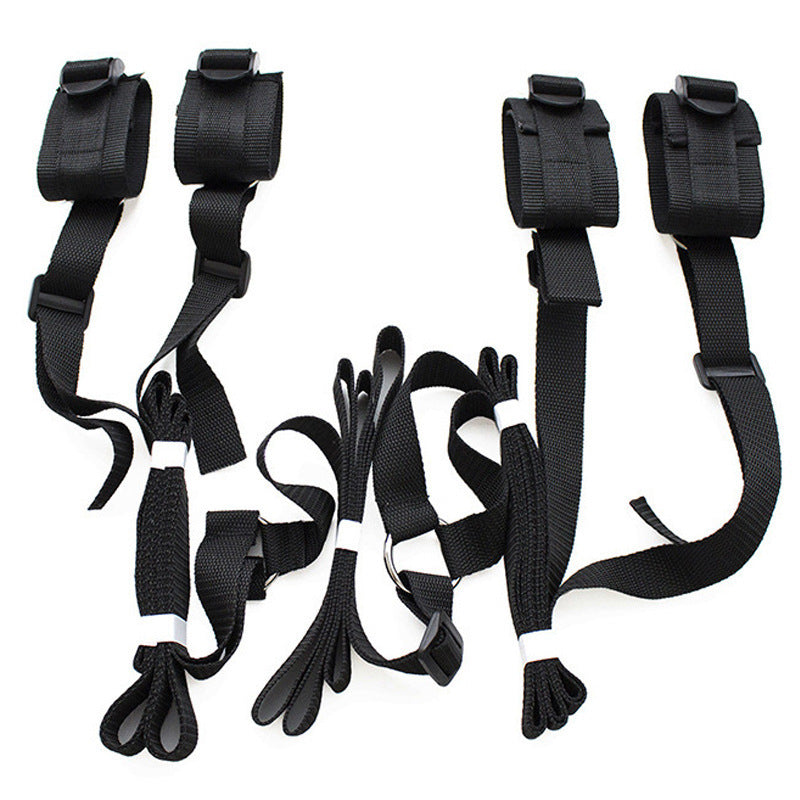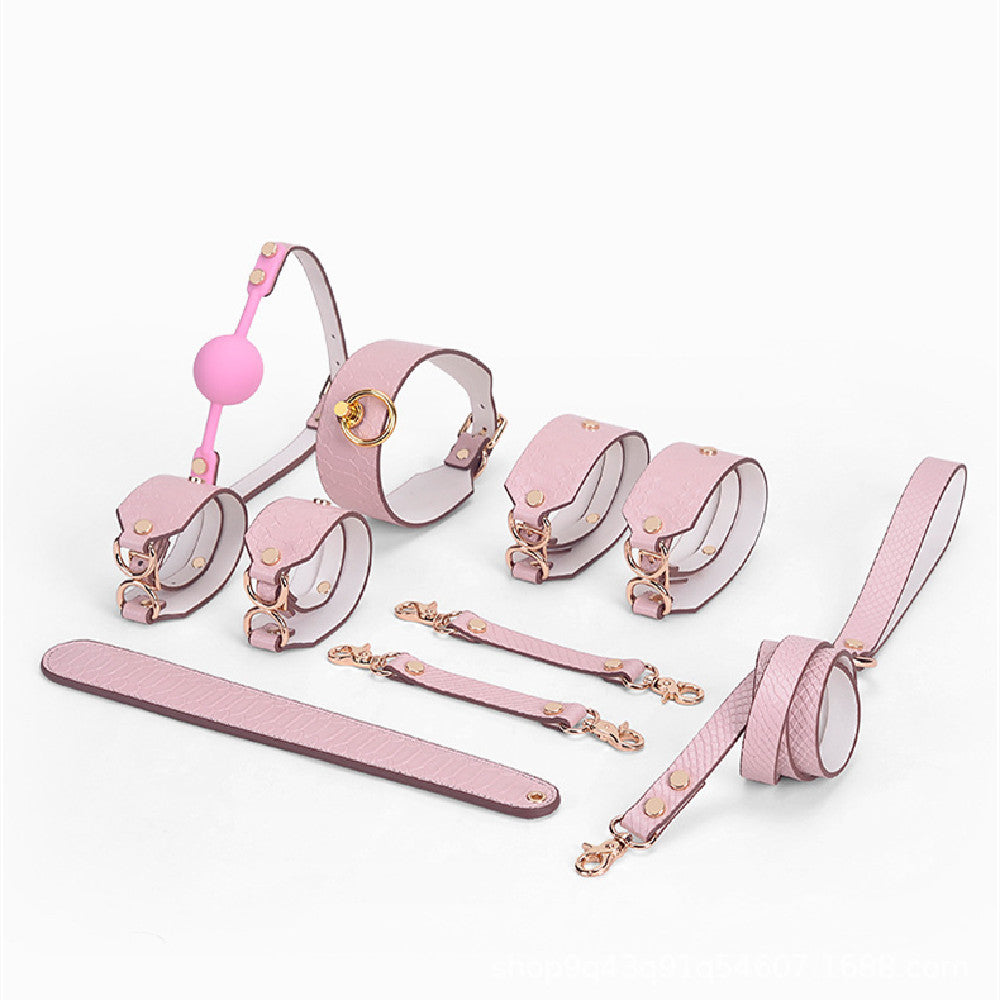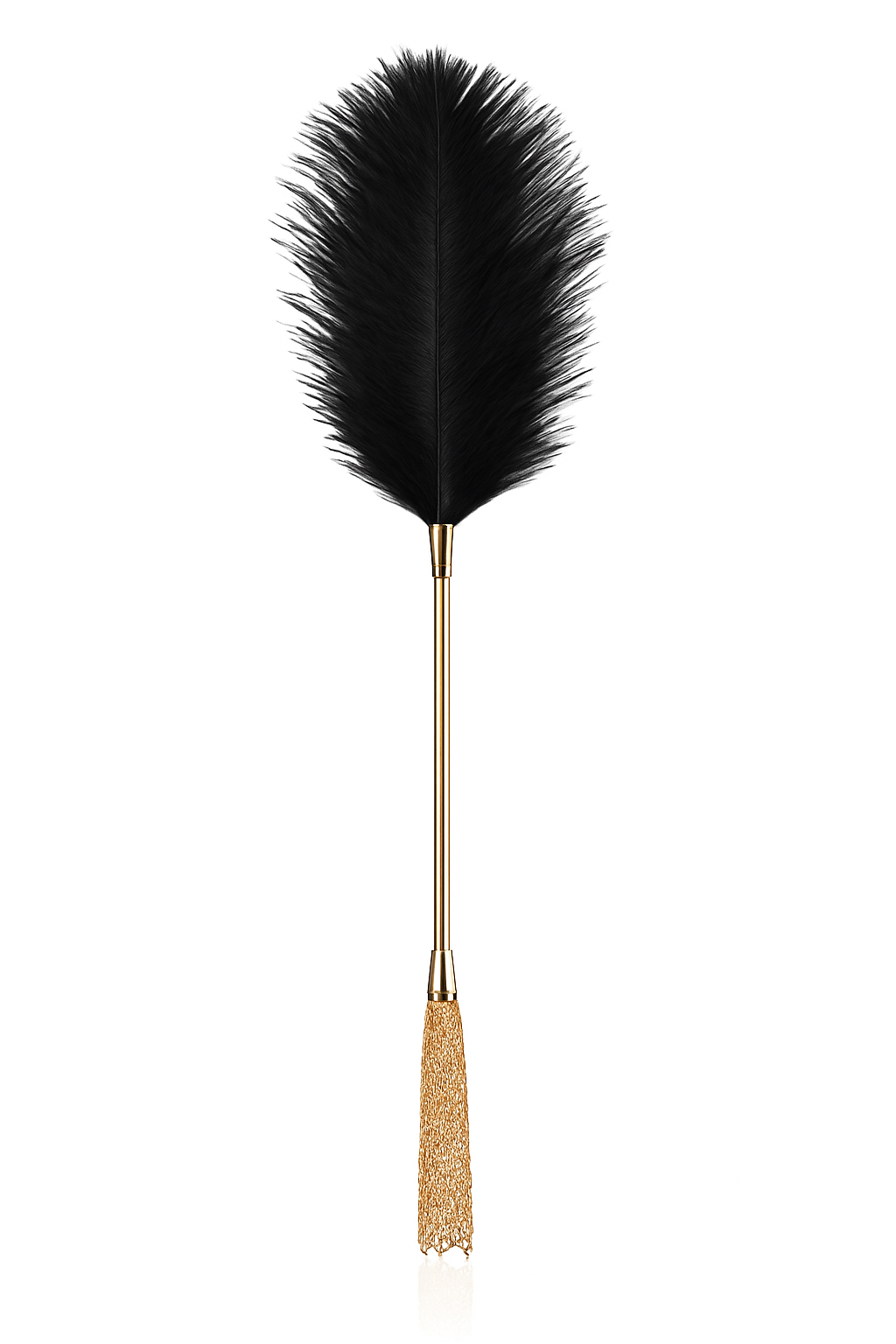A Beginner's Guide to Sensory Play: Understanding the Basics
Exploring the Foundations of Kink with Safety and Style

Welcome to the fascinating world of BDSM, where trust, communication, and exploration create profound connections. Whether you're curious about bondage or looking to deepen your understanding, this guide will walk you through the essentials with elegance and expertise.
Key Takeaways
- Bondage is just one aspect of the broader BDSM spectrum
- Safety and consent are non-negotiable fundamentals
- Quality restraints make all the difference in experience
- Communication enhances both safety and pleasure
- Starting slow leads to more satisfying exploration
Understanding the BDSM Spectrum
BDSM stands for Bondage and Discipline (B&D), Dominance and Submission (D&S), and Sadism and Masochism (S&M). It represents a spectrum of consensual activities that explore power dynamics, sensory experiences, and intense intimacy.



Is bondage part of BDSM?
Absolutely. Bondage is one of the foundational elements within the BDSM spectrum, specifically falling under the "Bondage and Discipline" category. However, it's important to note that bondage can be practiced as a standalone activity or combined with other BDSM elements.
For those interested in learning more about the psychological aspects of BDSM, the Psycnet. has published insightful research on how these practices can enhance relationships when conducted consensually.
Exploring Bondage Restraints: Types and Uses
What are the different types of bondage restraints?
The world of bondage restraints offers diverse options for every comfort level and scenario:
Cuffs
Available in leather, neoprene, or velvet, cuffs wrap comfortably around wrists or ankles with secure fastenings.
Rope
Traditional and versatile, rope bondage (shibari) requires skill but offers beautiful aesthetic possibilities.
Spreader Bars
These rigid bars keep limbs apart, typically used between ankles or wrists to maintain an open position.
Under-Bed Restraints
Discreet systems that attach to bed frames, allowing for quick setup and easy storage.
What's the difference between handcuffs and bondage cuffs?
While they may look similar, these serve very different purposes:
| Feature | Police Handcuffs | Bondage Cuffs |
|---|---|---|
| Material | Metal (usually steel) | Leather, faux fur, velvet, or neoprene |
| Padding | None | Usually padded for comfort |
| Safety Release | Requires key | Often has quick-release mechanisms |
| Adjustability | Limited | Typically adjustable for perfect fit |
What materials are best for bondage cuffs?
The ideal material depends on your priorities:
- Leather: Durable and classic, but requires maintenance
- Neoprene: Soft, waterproof, and easy to clean
- Velvet/Faux Fur: Luxurious feel against skin
- Silicone: Flexible and body-safe
- Metal: For advanced users seeking rigid restraint
- Silk: Ultra-soft for sensitive skin
StylinArts Recommendation
Our Luxe Bondage Cuff Set combines premium vegan leather with satin lining for the perfect balance of security and comfort. Designed with quick-release buckles and adjustable sizing, they're ideal for beginners and experienced users alike.
Explore CollectionBondage Safety: Essential Knowledge
Is bondage safe to try as a beginner?
Bondage can be perfectly safe for beginners when following fundamental safety guidelines:
Beginner Safety Checklist
- Always establish a safe word (consider the traffic light system: green=good, yellow=check in, red=stop immediately)
- Start with wide, padded restraints rather than thin or metal ones
- Never leave a bound partner unattended
- Keep safety scissors nearby for quick release if needed
- Limit initial sessions to 15-20 minutes
- Check circulation regularly (fingers/toes should stay warm and pink)
Are rope restraints safer than metal cuffs?
This depends entirely on context and experience level:
Rope
Pros: More adjustable, can be cut away quickly, versatile positions
Cons: Requires knowledge of safe tying techniques, can tighten unexpectedly, nerve damage risk if improperly placed
Metal Cuffs
Pros: Consistent pressure, easy to apply/remove, less likely to tighten accidentally
Cons: Can pinch skin, no "give" if pulled against, require key for release
For absolute beginners, padded fabric cuffs often represent the safest middle ground between these options.
Pro Tip
"Always test any new restraint on yourself first before using it on a partner. This helps you understand how it feels and operates, making you better prepared to monitor your partner's comfort." — StylinArts Bondage Educator
For comprehensive safety guidelines, the National Coalition for Sexual Freedom offers excellent resources on risk-aware consensual kink (RACK) practices.
Practical Guide to Using Bondage Equipment
How do you use a spreader bar in bed?
Spreader bars create delicious tension by limiting how close limbs can get. Here's a step-by-step guide:
Choose Your Bar
Select an adjustable bar that fits your bed size. Our Modular Spreader System allows length customization from 12" to 36".
Attach Cuffs
Secure comfortable cuffs to ankles or wrists, then clip them to the bar's O-rings. Ensure enough slack for slight movement but not enough to touch.
Positioning
For ankle spreading, place the bar at foot of bed. For wrist spreading above head, consider attaching to bedposts or headboard.
Check Comfort
Ensure your partner can maintain this position comfortably. Use pillows for support if needed.
What are bed restraints used for?
Under-bed restraint systems offer versatile possibilities:
Accessibility
Allows restraint without needing bedposts or headboard
Quick Setup
Deploys in seconds and stores discreetly when not in use
Multiple Positions
Enables spreadeagle, hands-above-head, or other configurations
Are under-bed restraints easy to hide?
Modern under-bed systems are designed with discretion in mind:
- Thin, sturdy straps that tuck completely under mattress
- Neutral-colored components that blend with bed frame
- Compact storage when not in use (many fit in nightstand drawers)
- No permanent modifications to bed required
StylinArts Pick
The Invisible Bondage System features whisper-thin straps that disappear under any mattress, with silky-soft cuffs that store compactly in their included velvet pouch. Perfect for maintaining a sophisticated bedroom aesthetic.
View ProductThe Art of Communication: Talking About Bondage
How do you talk to your partner about trying bondage?
Opening this conversation requires sensitivity and positivity:
Conversation Starters
- "I read about how some couples use light restraints to enhance intimacy—that sounds intriguing to me. What do you think?"
- "Would you be open to experimenting with some new sensations together? I have some ideas we could explore."
- "I found this beautiful silk restraint set that looks comfortable and elegant—maybe we could try it just for fun?"
Can bondage improve intimacy?
When practiced consensually, bondage can profoundly deepen intimacy through:
Trust Building
Surrendering control or accepting responsibility for a partner's pleasure builds profound trust
Present-Moment Awareness
Restriction heightens other senses, making touch and connection more intense
Vulnerability
Sharing fantasies and exploring new territory together creates emotional closeness
Aftercare Bonding
The tender reconnection after play establishes deep emotional security

"Bondage became our relationship's secret language—a way to communicate desires without words. Starting with simple silk ties taught us more about each other's needs than years of conventional intimacy had."
The Kinsey Institute has conducted extensive research on how alternative sexual practices can strengthen relationships when approached with mutual respect and communication.
Your First Bondage Experience: A Step-by-Step Guide
The Perfect Beginner Session
Preparation
- Choose a stress-free evening with no time pressures
- Gather supplies: padded cuffs, lubricant, safety scissors
- Set mood with dim lighting and comfortable temperature
- Discuss limits and safe words beforehand
Execution
- Start with gentle massage to establish connection
- Apply one cuff at a time, checking comfort
- Maintain physical contact and verbal check-ins
- Keep first session under 20 minutes
Aftercare
- Release restraints slowly
- Massage restrained areas to restore circulation
- Discuss what felt good and what to adjust next time
- Offer water and warm blanket for grounding
Recommended Starter Kit
Curating the right beginner tools makes all the difference:
Bondage FAQs: Expert Answers
How tight should restraints be?
You should be able to slip one finger comfortably between the restraint and skin. Any tighter risks circulation issues; looser may allow slipping out.
What if my partner wants to stop mid-scene?
Immediately release restraints and switch to aftercare. Never question or shame a partner for using the safe word—this maintains crucial trust.
Can bondage help with stress relief?
Many find the surrender of control profoundly relaxing, as it forces present-moment focus. The oxytocin release from aftercare also reduces stress hormones.
How do I clean bondage gear?
Most fabric cuffs can be spot-cleaned with mild soap. Leather requires special conditioner. Always check manufacturer instructions—our StylinArts pieces include care cards.
Is bondage always sexual?
Not necessarily. Some practice bondage for meditation, artistic expression, or the challenge of intricate ties. Communication clarifies intentions.
How do we progress safely?
Add one new element at a time—perhaps try a blindfold with familiar restraints, or experiment with different positions before introducing new equipment.
For more detailed FAQs, the Wikipedia maintains an extensive knowledge base on safe practices and beginner questions.
Embracing the Journey
Bondage offers a rich landscape for exploration, connection, and personal growth. By starting with quality tools, prioritizing safety, and maintaining open communication, you'll discover new dimensions of intimacy and trust.
Ready to Begin Your Exploration?
Discover our carefully curated bondage essentials designed for comfort, safety, and sophistication.
Shop the StylinArts Bondage CollectionRemember: The most powerful tool in bondage isn't the restraints themselves, but the communication and connection they facilitate. Approach this journey with curiosity, patience, and respect for each other's boundaries.












































































































































































































